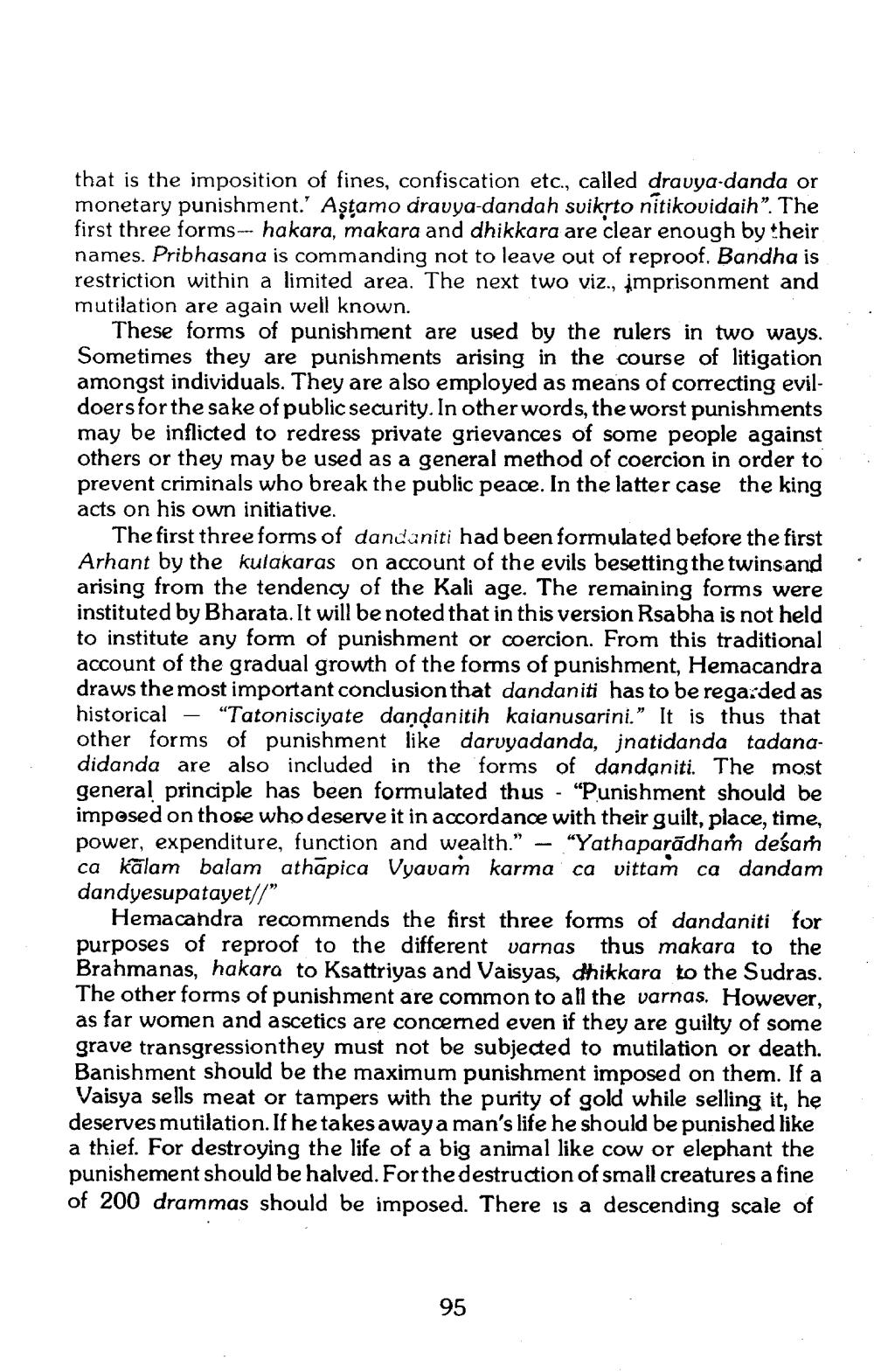________________
that is the imposition of fines, confiscation etc., called dravya-danda or monetary punishment.' Aştamo dravya-dandah suikrto nitikovidaih”. The first three forms- hakara, makara and dhikkara are clear enough by their names. Pribhasana is commanding not to leave out of reproof. Bandha is restriction within a limited area. The next two viz., imprisonment and mutilation are again well known.
These forms of punishment are used by the rulers in two ways. Sometimes they are punishments arising in the course of litigation amongst individuals. They are also employed as means of correcting evil doers for the sake of public security. In other words, the worst punishments may be inflicted to redress private grievances of some people against others or they may be used as a general method of coercion in order to prevent criminals who break the public peace. In the latter case the king acts on his own initiative.
The first three forms of dancaniti had been formulated before the first Arhant by the kulakaras on account of the evils besetting the twinsand arising from the tendency of the Kali age. The remaining forms were instituted by Bharata. It will be noted that in this version Rsabha is not held to institute any form of punishment or coercion. From this traditional account of the gradual growth of the forms of punishment, Hemacandra draws the most important conclusion that dandaniti has to be regarded as historical – “Tatonisciyate dandanitih kaianusarini." It is thus that other forms of punishment like daruyadanda, jnatidanda tadanadidanda are also included in the forms of dandaniti. The most general principle has been formulated thus - "Punishment should be imposed on those who deserve it in accordance with their guilt, place, time, power, expenditure, function and wealth.” – “Yathaparādhañ desar ca kālam balam athāpica Vyavas karma ca vittam ca dandam dandyesupatayet/
Hemacandra recommends the first three forms of dandaniti for purposes of reproof to the different varnas thus makara to the Brahmanas, hakara to Ksattriyas and Vaisyas, dhikkara to the Sudras. The other forms of punishment are common to all the varnas. However, as far women and ascetics are concerned even if they are guilty of some grave transgressionthey must not be subjected to mutilation or death. Banishment should be the maximum punishment imposed on them. If a Vaisya sells meat or tampers with the purity of gold while selling it, he deserves mutilation. If he takes awaya man's life he should be punished like a thief. For destroying the life of a big animal like cow or elephant the punishement should be halved. For the destruction of small creatures a fine of 200 drammas should be imposed. There is a descending scale of
95




